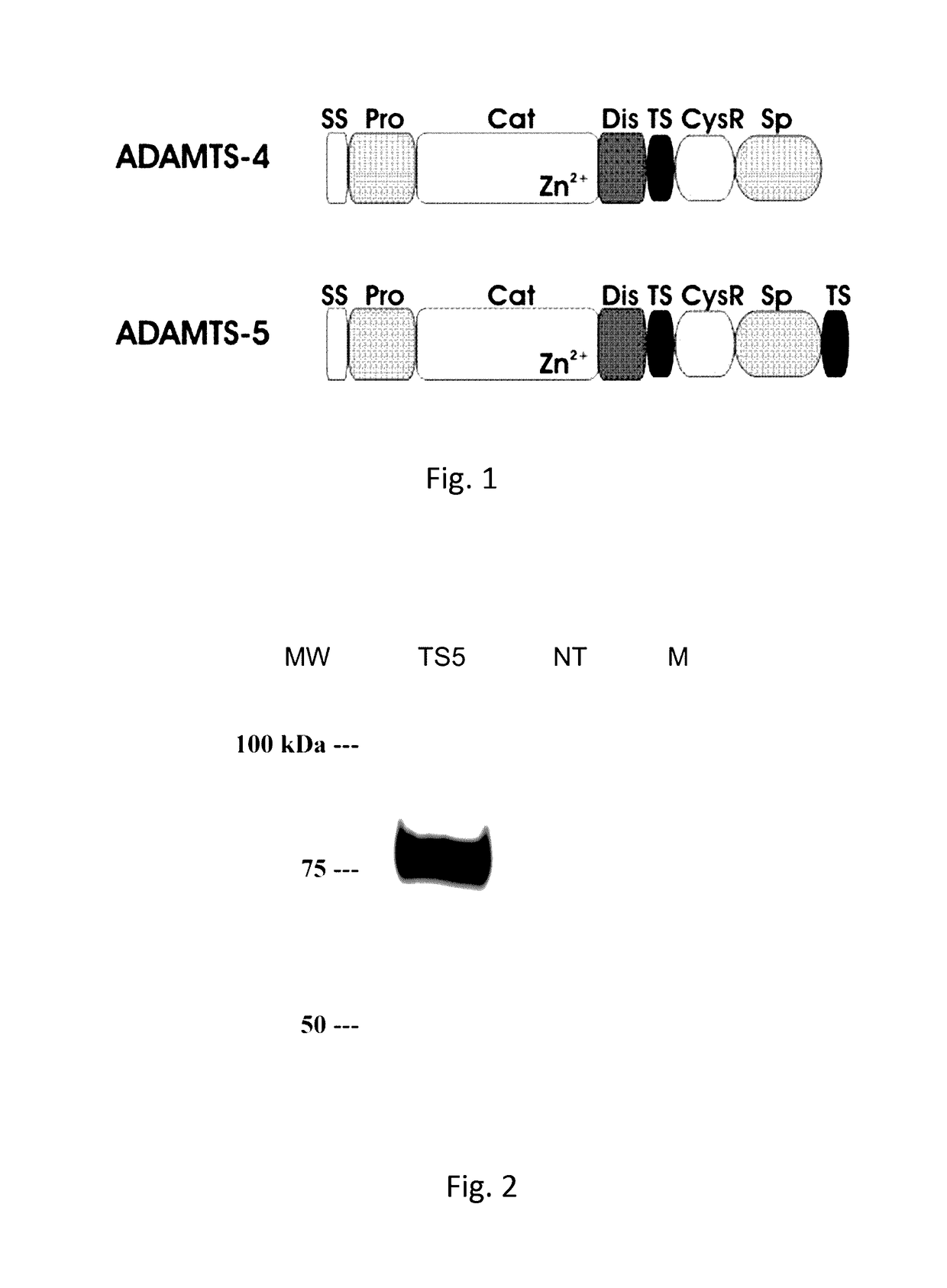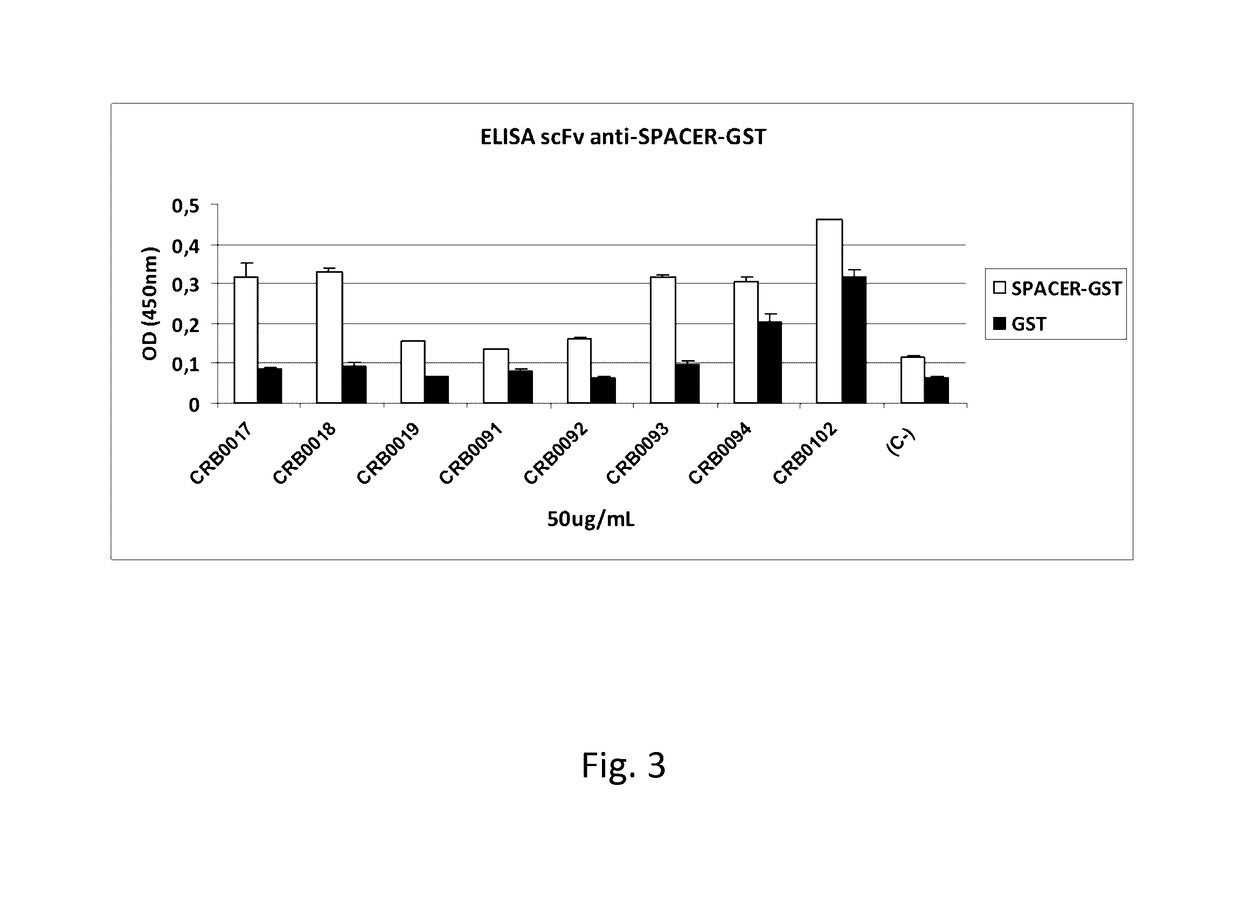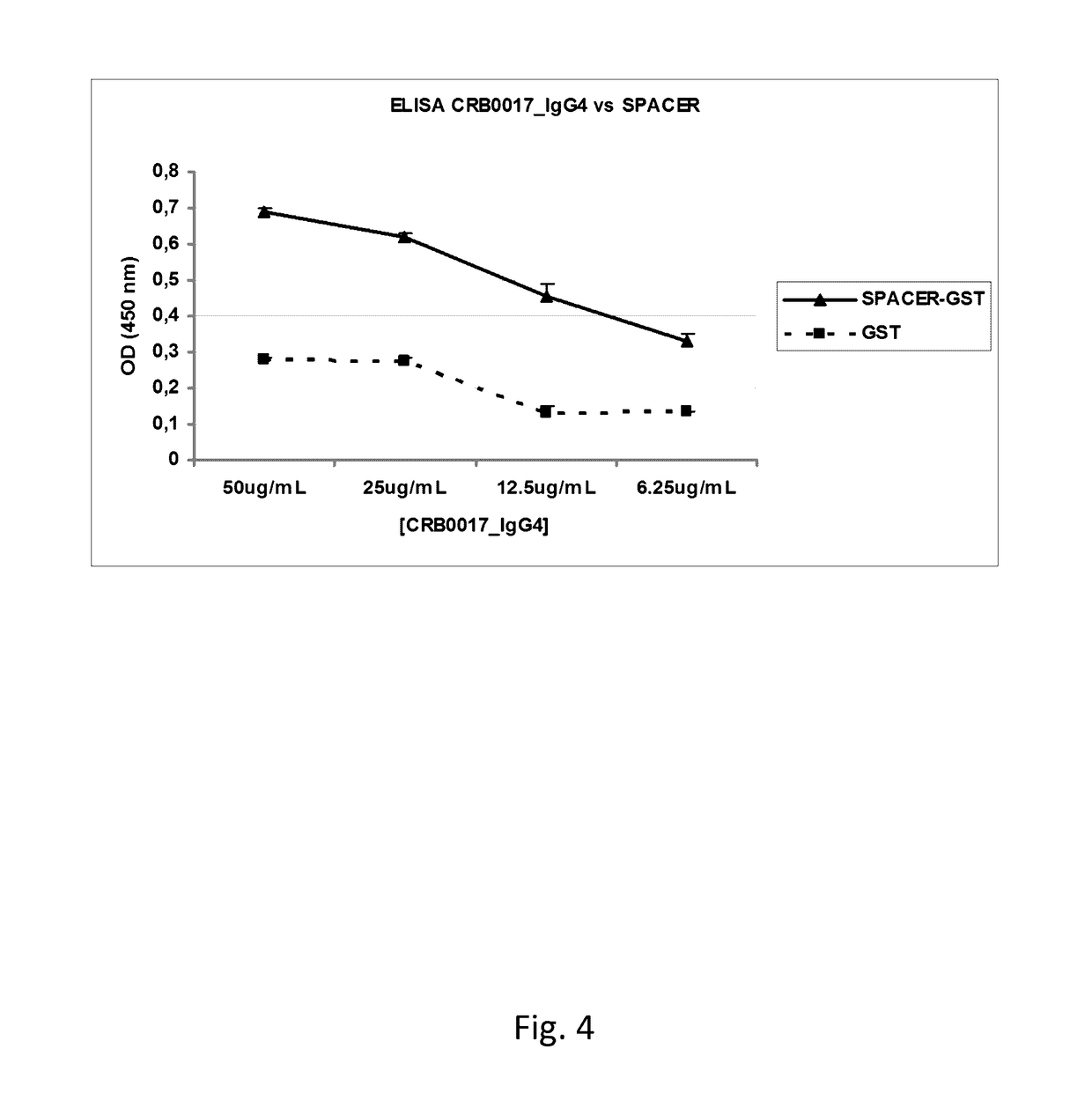Anti-ADAMTS-5 antibody, derivatives and uses thereof
a technology of antibodies and derivatives, applied in the field of antiadamts5 antibodies, can solve the problems of limited joint movement, pain and chronic disability, limited joint movement, and relatively little information regarding aetiology, pathogenesis, and progression, and achieve the effects of preventing cartilage degradation, and reducing the risk of immune responses
- Summary
- Abstract
- Description
- Claims
- Application Information
AI Technical Summary
Benefits of technology
Problems solved by technology
Method used
Image
Examples
Embodiment Construction
Description of the Sequences
[0108]SEQ. ID NO:1: ATS4_HUMAN A disintegrin and metalloproteinase with thrombospondin motifs 4 (UniProtKB / Swiss-Prot: 075173.3)
[0109]SEQ. ID NO 2: ATS5_HUMAN A disintegrin and metalloproteinase with thrombospondin motifs 5 (UniProtKB / Swiss-Prot: Q9UNA0.2)
[0110]In the following: VK=light chain, VH=heavy chain, CDRL=complementary determining region of light chain, CDRH=complementary determining region of heavy chain.
[0111]SEQ ID NO: 3 to SEQ ID NO: 94, SEQ ID NO: 125 to 132 and SEQ ID NO: 135 to SEQ ID NO: 137 are amino acid sequences, SEQ ID NO:95 to 120 are nucleotide sequences.[0112]SEQ. ID NO: 3, CRB0017VK[0113]SEQ. ID NO: 4, CRB0017VH[0114]SEQ. ID NO: 5, CRB0018VK[0115]SEQ. ID NO: 6, CRB0018VH[0116]SEQ. ID NO: 7, CRB0019VK[0117]SEQ. ID NO: 8, CRB0019VH[0118]SEQ. ID NO: 9, CRB0091VK[0119]SEQ. ID NO: 10, CRB0091VH[0120]SEQ. ID NO: 11, CRB0092VL[0121]SEQ. ID NO: 12, CRB0092VH[0122]SEQ. ID NO: 13, CRB0093VK[0123]SEQ. ID NO: 14, CRB0093VH[0124]SEQ. ID NO: ...
PUM
| Property | Measurement | Unit |
|---|---|---|
| concentration | aaaaa | aaaaa |
| concentration | aaaaa | aaaaa |
| pH | aaaaa | aaaaa |
Abstract
Description
Claims
Application Information
 Login to View More
Login to View More - R&D
- Intellectual Property
- Life Sciences
- Materials
- Tech Scout
- Unparalleled Data Quality
- Higher Quality Content
- 60% Fewer Hallucinations
Browse by: Latest US Patents, China's latest patents, Technical Efficacy Thesaurus, Application Domain, Technology Topic, Popular Technical Reports.
© 2025 PatSnap. All rights reserved.Legal|Privacy policy|Modern Slavery Act Transparency Statement|Sitemap|About US| Contact US: help@patsnap.com



